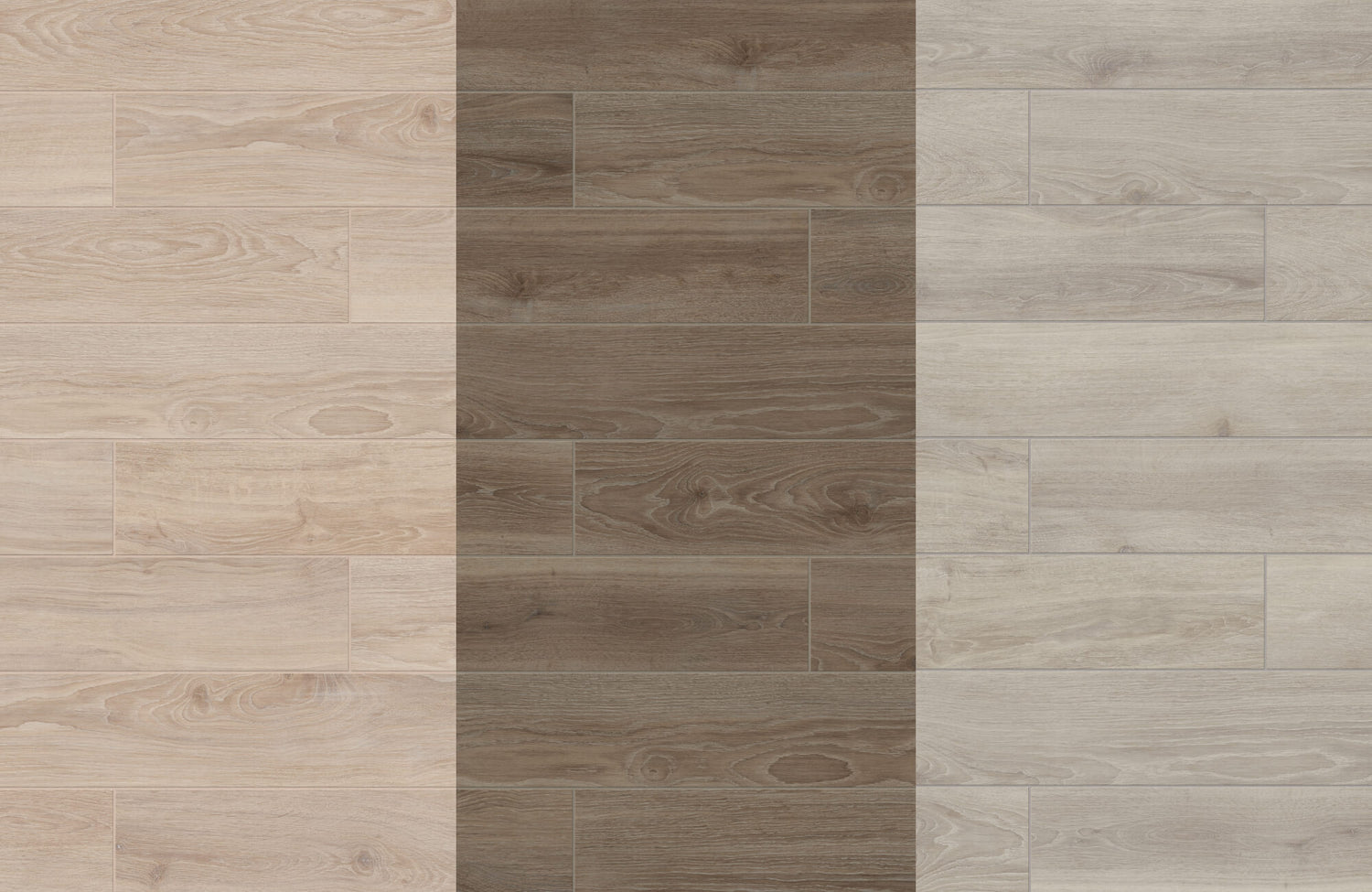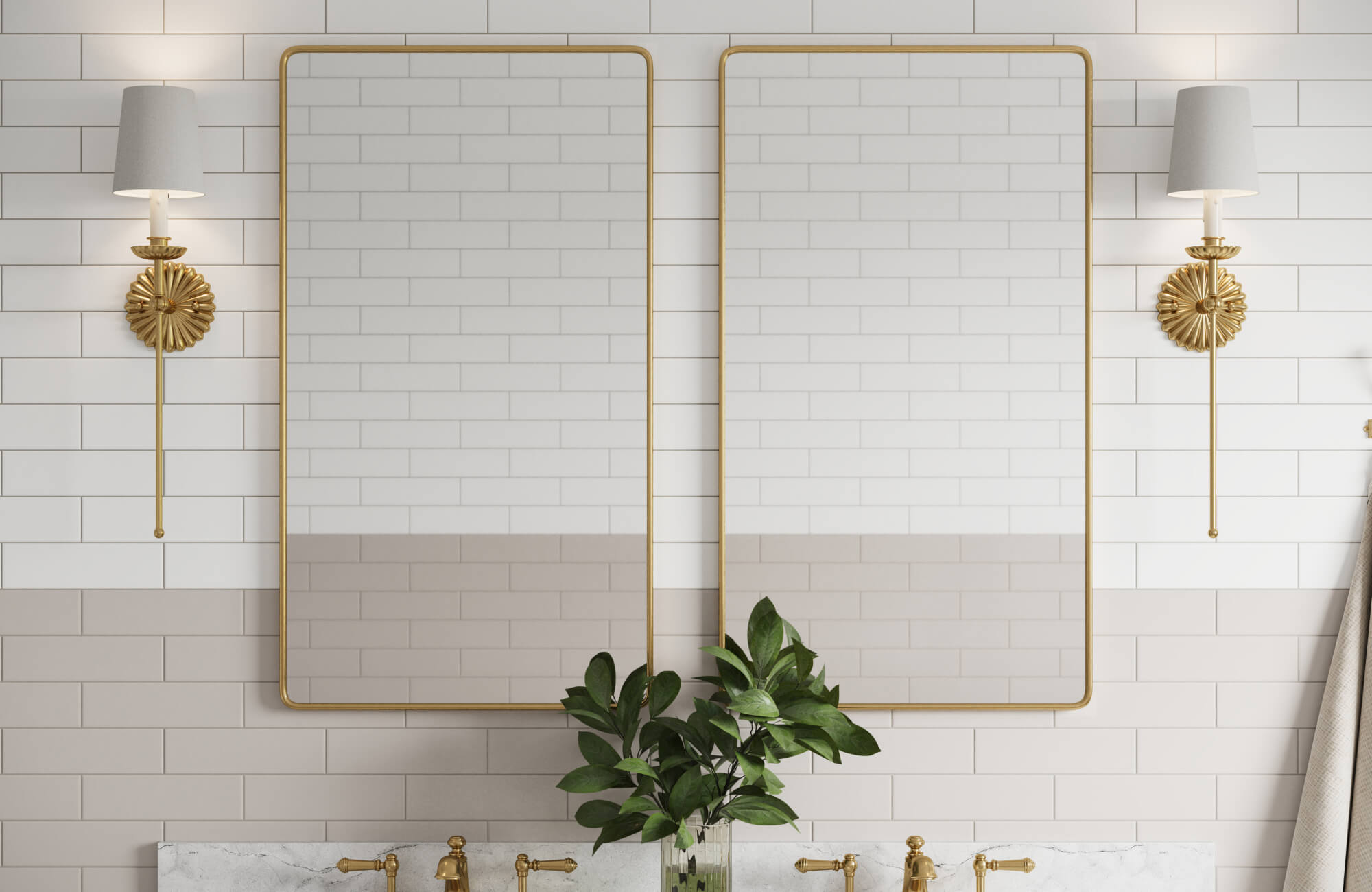Wood look tiles have transformed how we approach interior design, combining the natural beauty of wood with the practicality of modern ceramic or porcelain. These tiles are known for their durability, water resistance, and low-maintenance qualities, and they are ideal for contemporary and traditional spaces. The right color—beige, taupe, or brown—is essential, as it directly influences a room's mood, style, and functionality. So, in this article, we’ll explore the subtle differences between these colors and their impact on room settings to help ensure that your choice aligns with your vision.
Understanding Undertones
Choosing the right undertone for wood look tiles can dramatically affect the atmosphere of a room, influencing how their color interacts with light and other design elements. Before we dive deep into the popular colors of wood look tiles, we’ll first explore what undertones are and how they impact the overall feel of your space.
The Subtle Power of Undertones
At first glance, beige, taupe, and brown may seem similar, but their undertones create distinct effects that shape the atmosphere of a room. Beige often carries warm undertones that provide a cozy and inviting feel, making it perfect for spaces where comfort is a priority. Conversely, taupe leans toward cooler undertones, offering a refined, tranquil look that feels effortlessly sophisticated. Brown's diverse undertones can be warm or cool, evoking anything from rustic charm to modern minimalism, depending on the shade.
The Psychology of Color
Color choices play an integral role in how we experience a space, with each hue evoking specific emotions and moods. Beige and brown, with their warm qualities, are often associated with feelings of comfort, security, and relaxation. They create a welcoming and serene environment for living rooms, bedrooms, and kitchens. On one hand, Taupe is a neutral shade that blends gray and brown, often described as a "warm gray" or "cool beige.” Its understated nature makes it an excellent choice for creating balance and calmness in interiors, fostering focus and tranquility in home offices or bathrooms. Recognizing the emotional impact of these colors helps you choose a shade that aligns with your lifestyle and aesthetic goals.
Choosing the Right Undertones for Your Space
When selecting undertones, it’s essential to consider how the lighting in your room interacts with your wood look tiles and the overall aesthetic you wish to achieve. Warm undertones can brighten spaces with limited natural light, adding a sense of coziness and intimacy. In contrast, cooler undertones are ideal for rooms with ample natural light, lending the space a crisp and serene feel. To ensure the best choice, testing tile samples in your home allows you to observe how the undertones blend with your other design elements like furniture, wall colors, and light sources. Additionally, our Augmented Reality (AR) Tool makes this process even easier by enabling you to visualize how your selected wood look tiles will look in your room, helping you confidently preview how each option complements your unique style and space.

Beige Wood Look Tiles
As previously highlighted, beige wood look tiles in shades such as maple, pine, or birch are versatile and timeless, offering warmth and adaptability for various design styles. For example, Edward Martin’s Jameson 8x48 Matte Porcelain Tile in Latte, shown above, exemplifies how beige tones can transform a kitchen into a welcoming and elegant space. These tiles anchor the room seamlessly, harmonizing with light wooden cabinetry, brushed gold fixtures, and stone-inspired countertops in cream to create an airy, cohesive look.
Beige wood look tiles also shine in living areas, where their warmth pairs beautifully with pastel accents like soft sage greens or pale blues to evoke a serene ambiance. For a more dramatic effect, introducing bold elements such as navy or charcoal creates a modern, striking contrast. Incorporating natural materials like potted plants, textured rugs, or stone backsplashes further enhances their timeless elegance, making beige wood-look tiles an exceptional foundation for classic and contemporary interiors.

Taupe Wood Look Tiles
Taupe wood look tiles in shades such as weathered gray oak, driftwood, or aged ash offer an ideal balance of elegance and adaptability, effortlessly bridging warm and cool palettes. Edward Martin’s Preston 8x48 Matte Porcelain Tile in White Oak, featured in the image above, demonstrates how taupe tones can create a sleek, modern living area that complements diverse design elements like earthy textures and contemporary furniture. These tiles introduce understated sophistication, providing a neutral yet distinctive foundation for various interior styles.
In contemporary spaces, taupe wood look tiles also pair beautifully with soft brown or tan furniture, enhancing warmth, while black or matte metal accents add contrast and depth. In bathrooms, these tiles excel as shower walls or flooring, particularly when combined with glass enclosures and brushed nickel fixtures to create a serene, spa-like ambiance. Bedrooms also benefit from the tranquil qualities of taupe flooring, wildly when styled with muted textiles, soft linens, and natural wood furniture. Adding elements like greenery or textured rugs can further elevate the design.

Brown Wood Look Tiles
Brown wood look tiles bring a sense of richness and character to any space, making a striking impression with their deep, earthy tones, such as those found in walnut, mahogany, or dark-stained oak. A great example is Edward Martin’s Jameson 8x48 Matte Porcelain Tile in Umber, highlighted in the image above.
In kitchens, these tiles pair beautifully with other earthy tones like terracotta or mustard yellow, creating a cozy, rustic ambiance that feels warm and inviting. In living rooms, brown wood-look tiles complement neutral shades such as gray or beige, helping to achieve a contemporary, minimalist vibe while grounding the space. Equally striking in bathrooms, these tiles can be used as flooring or shower walls, especially when paired with gold fixtures and textured glass to add a touch of luxury and sophistication. Brown wood-look tiles offer unmatched versatility, making them a standout choice for various interior styles.
Creating Visual Interest with Patterns and Textures
Patterns and textures in wood look tiles are essential for adding depth, character, and individuality to your interiors. These design elements enhance the aesthetics of a space by creating visual interest and tactile appeal while maintaining the warmth and natural charm of wood. From subtle textured finishes that mimic authentic wood grains to boldly patterned layouts that make a statement, the possibilities are endless when selecting the right tile color for your space.
Stylish Patterns
Layouts such as herringbone or chevron add modern flair while maintaining the timeless warmth of your wood look tiles. These patterns shine as feature walls or statement flooring, drawing attention without overpowering the overall design of your space. For instance, a herringbone-patterned floor can elevate an entryway with its subtle sophistication, as seen with Edward Martin's Jameson 8x48 Matte Porcelain Tile in Camel, pictured above. Similarly, a chevron backsplash in the kitchen creates an elegant focal point that complements rustic aesthetics and minimalist decor.
Textured Finishes
Textured wood look tiles emulate the knots, grains, and variations in natural wood, adding a tactile dimension to your spaces. Subtle textures work well in contemporary settings, and more pronounced textures offer dramatic appeal in spaces with organic accents like bamboo or wicker.
Mixing and Matching
Combining patterns and textures within a space allows for creative expression and ensures your design is cohesive and unique. For instance, pairing large, neutral-textured floor tiles with a patterned wood look accent wall achieves a harmonious balance, enhancing the natural beauty of the wood finish while infusing the room with personality. Incorporating stone look tiles alongside wood look textures creates a layered, rich aesthetic. This approach is recommended in open-concept spaces, where diverse textures and patterns can define zones while maintaining visual harmony.
Transform Your Home with the Right Tile Choices
Choosing the suitable wood look tile color lays the foundation for a well-designed and cohesive space. Beige provides timeless appeal, effortlessly complementing various styles, while taupe offers versatile neutrality that bridges warm and cool palettes. Brown adds richness and character to any room with its warmth and drama. By understanding the distinct qualities of these colors, you can craft spaces that feel personal, inviting, and harmonious. It’s also crucial to consider undertones and lighting, as they subtly shape the atmosphere of a room.
To simplify your decision-making, we offer 4" x 4" tile samples so you can experience the texture and color firsthand in your own space. If you’re looking for more personalized assistance, our design services are also available to provide tailored advice and solutions that align with your specific style and goals. With these resources, you can confidently create a home that is not only beautiful and functional but also uniquely reflective of your vision.









